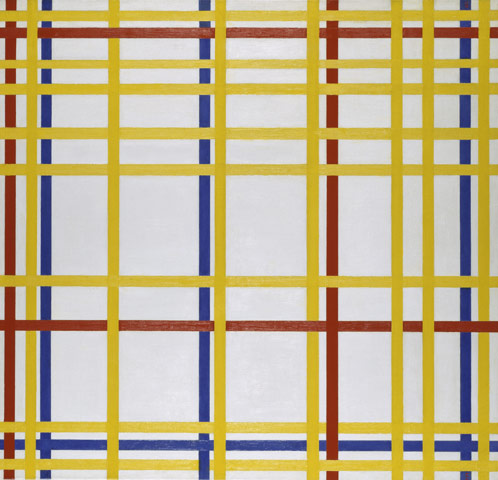Fr : version française / En: english version
mheu, Historical Museum of the Urban Environment
New York City I
Piet Mondrian

1942
oil on canvas
119cm X 114cm
Paris, musée national d'Art moderne - Centre Georges Pompidou
© Collection Centre Pompidou, Dist. RMN / Philippe Migeat - HCR, Warreton USA
View this work in the exhibition Babel to Dubai: Urban Utopias
The work
Mondrian was captivated on seeing the city of New York in 1940. Its bright, geometric, colorful design was a direct reflection of his own research. There, he came to discover jazz and boogie-woogie, which also made a strong impression on the artist. This source of inspiration can be seen in a number of works, such as Broadway Boogie-Woogie and New York City I (1941-1942), which capture careful attention to rhythm and are now kept in the Pompidou Centre, Paris.
The artist
Pieter Cornelis Mondriaan (aka Mondrian) was a pioneering figure of the abstract movement, born in the Netherlands in 1872. Like Van Gogh, he was torn between a career as a preacher and his vocation as a painter. He eventually chose the latter: after training at the School of Fine Arts in Amsterdam, he began to explore every aspect of avant-garde art. His encounter with cubism in 1912 had dramatic results: Mondrian, who was first and foremost interested in the construction of his canvases, began to shift towards more abstract works featuring strong geometric lines and solid colors. His artwork went hand in hand with some intense theorizing influenced by theosophy (an esoteric doctrine popular among his generation). As it did with many artists, the Second World War had a strong impact on his career: after leaving Paris in 1938 and witnessing the London bombings in 1940, he moved to New York, where he died in 1944.